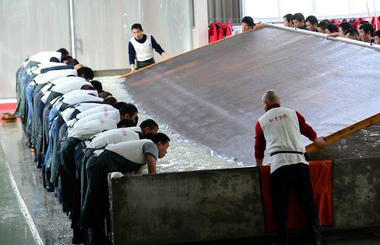Book sees world population crash in coming times
By Berlin Fang in Huntington, West Virginia ( China Daily ) Updated: 2015-12-09 08:07:36Sexual life is increasingly for joy, not for producing children, while divorce rates are on the rise worldwide. All these factors are hurting people's motivation to have children.
With the existing base, the world population is still on the rise in the immediate future, but "not many researchers look forward far enough to see over the curve of stable population to the potential downside", according to the author.
While demographers may persist in their false projections of population rise, countries like Russia and Japan are facing strong effects of both shrinking and aging population.
Pearce says he believes there will be a turning point at which population growth will stop and begin to drop. That turning point may come before the end of the century or sooner, "given the global fertility rate is now down to around 2.4 (average number of children per woman)".
"When I wrote the book, it was 2.6," he adds.
Fertility rates are even lower in Asia, the author says, citing Shanghai as being at 0.7.
Even in regions or countries without a family planning policy, the fertility rate is also declining.
"Look at Hong Kong. No one-child policy, but the average is 1.2 babies per woman. Taiwan is 1.1," Pearce says.
He says East Asia has low fertility rates. "It is a global trend but is especially marked in East Asia." He believes cultural reasons lie behind the lukewarm attitude toward having children.
Economic pressures may also have led to couples' hesitation to have more than one child. Chinese, for instance, focus too much on giving children the best education and everything else, including down payments for young adults' housing in some cases ("nibbling the old"), which makes it "not so desirable" to have children. Most families simply cannot afford it.
"If we get toward a (population) crash, probably people will start having more children again," Pearce says.
Berlin Fang is a US-based author and columnist.
|
|
|
|
|
|
|
|























 Raymond Zhou:
Raymond Zhou: Pauline D Loh:
Pauline D Loh: Hot Pot
Hot Pot Eco China
Eco China China Dream
China Dream China Face
China Face





